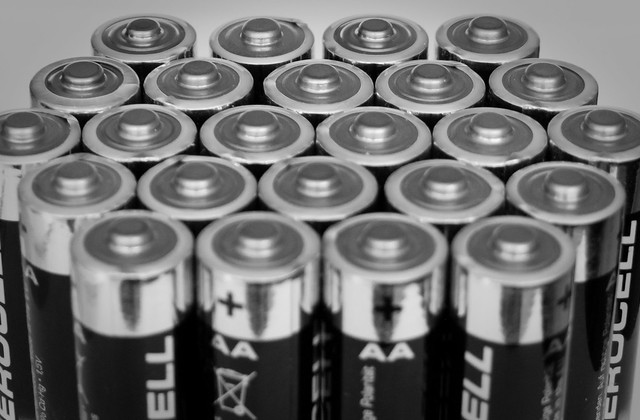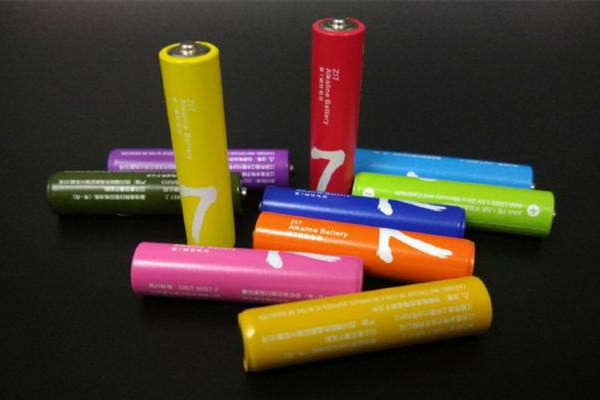Can You Recharge Lithium Ion Batteries?
Dec 04, 2019 Pageview:1016
The practical difference between Lithium batteries and Lithium ion batteries is that most Lithium batteries cannot be recharged, whereas Lithium ion batteries can be recharged. Lithium batteries use lithium in its pure metallic form from a chemical point of view whereas Lithium ion batteries use much more stable lithium compounds than the elemental lithium used in lithium batteries. While lithium ion batteries are designed to be recharged hundreds of times, a lithium battery should never be charged.
Also replacing the lithium ion battery of your phone is more difficult than treating it right in the first place. Many phones have no easy access to their batteries for the user. It includes all iPhones from companies like Samsung, as well as many flagship Android phones. Official battery replacements can be costly or inconvenient (at this year's Apple Store, try to get an official battery replacement). Environmental concerns still exist. Frankly, smartphones are an environmental disaster and it helps to reduce that by extending the lifetime of your phone battery. That’s why it is important to know the preventive measures of the battery to remain safe.
Are All Lithium Ion Batteries Rechargeable?
Indeed, they all can be recharged!
Lithium ion batteries are further classified as primary and secondary cells. In which only secondary lithium batteries are rechargeable but not the primary lithium ion cells.
Other current types of lithium cells (note ' ion ' omission) are main cells and cannot be reloaded as such. Never attempt to recharge these (primary) cells as they overheat, explode, and blow.
How Should Lithium Ion Batteries Be Recharged?
The charger process will spend less time during the constant voltage trail when the charge rate is low during the constant current phase. When you charge below about 0.18 C, when the 4.2 volts are hit, the cell is practically complete. This can be used as an alternative algorithm for charging of lithium ion batteries. Only charge the constant current below 0.18 C and avoid the charge if the voltage exceeds 4.2 volts per cell.
Security/ safety
Each battery pack of lithium ion should have a method of keeping the cell balanced and preventing overloading. Typically this is achieved with a safety board that controls the pack's load and discharge and prevents harmful things from happening. The cell manufacture determines the requirements of these security boards and may include the following:
Protection in reverse polarity. Temperature of charge should not be charged if the temperature is below 0 ° C or above 45 ° C.
The current of charge must not be too high, usually it should be below 0.7 C.
Discharge current protection to prevent short circuit damage.
Charge voltage, if too much voltage is applied to the battery terminals, a permanent fuse will open.
Protection overload, stops when voltage per cell increases above 4.30 volts.
Protection over-discharge, stop discharge when the voltage of the battery drops below 2,3 volts per cell (varies with the manufacturer).
If the battery is exposed to temperatures above 100 ° C, a fuse will open.
How Do You Prolong lithium ion batteries?
Here are some things you can do to preserve and extend your mobile battery's lifespan. By longevity of the battery I mean how many years and months the battery will last before replacing it with other battery.
1-Understand the weakening of your phone battery.
The phone battery degrades slightly with each charge cycle. A charging cycle is a complete discharge and charging of the battery from 0 % to 100 %. Partial charges are counted as a process fraction. For example, charging your phone from 50 % to 100 % would be half a charge period. Do this twice, and it's a loop of full charge. Many phone owners use more than one full charge cycle per day, while others use fewer. It depends on how much and what you're doing with your mobile.
2-Avoid heat and cold extremes.
If your phone gets hot or cold, the battery can be strained and its life span will be shortened. If it's hot and sunny outside or below freezing in winter, it would probably be the worst offender to lock it in your house.
3-Avoid charging quickly.
The battery is stressed by charging your phone quickly. Avoid using fast charging unless you really need it. In fact, the slower you charge the battery the better it will be, so go for it if you don't care about slow charging overnight. Loading your phone from your computer as well as certain smart plugs can limit the current on your phone, slowing down the rate of charge. Some external battery packs may also slow down charging speed, but I'm not sure.
4-Do not drain your phone battery to 0 percent or charge it to 100 percent.
Older battery types had a' battery memory.' If you haven't charged them and discharged them to zero power, they've' remembered' them and reduced their useful scope. If you always drained and charged the battery full, it was safer for their life time usage.
5-Charge your phone for long term storage up to 50 percent.
The healthiest cost tends to be about 50 percent for a lithium ion battery. If you will store your phone for an extended period of time, charge it to 50 % before turning it off and storing it. This is easier on the battery than charging it up to 100 % or allowing it to drain up to 0 % before storage.
Conclusion
Thus it is concluded that it is important to know that how to recharge lithium ion batteries and what will be the consequences if not recharge them in a proper way. However, the usage of lithium ion batteries are increasing day by day in the upcoming years as it will be used in the automotive too to reduce air pollution and to make environment eco friendly that is why researchers are searching and studying it to make it inexpensive and add different technologies in it to use it in effective way.
- Prev Article: Can You Rebuild Lithium-Ion Batteries?
- Next Article: Can I send lithium batteries in the mail?
Leave Message
Hottest Categories
-
Hottest Industry News
-
Latest Industry News













